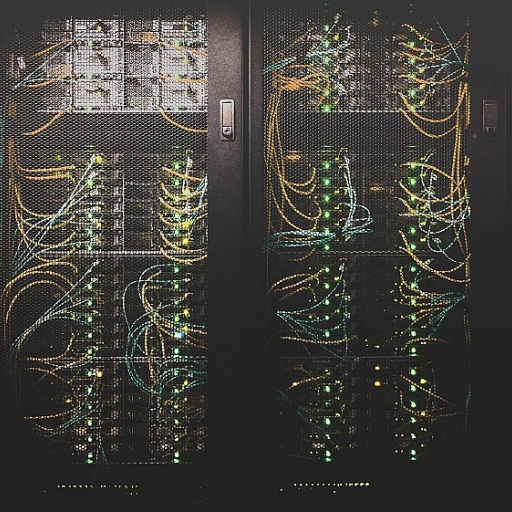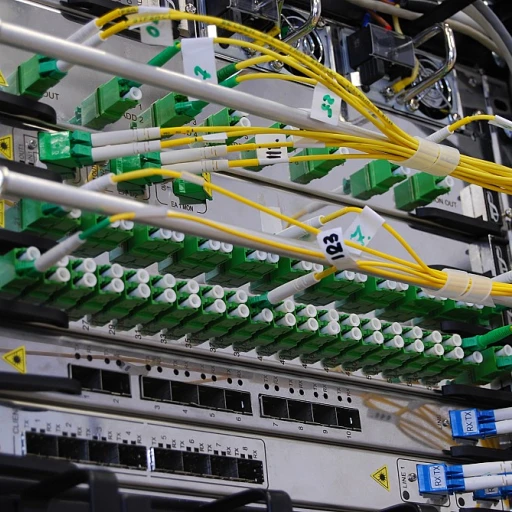
The Evolution of Rail Dispatch Systems
The Journey from Manual to Digital Dispatching
The evolution of rail dispatch systems is a fascinating journey from manual operations to sophisticated digital platforms. Initially, train dispatching relied heavily on human intervention, with dispatchers using telegraphs and radios to communicate with train crews. These early systems were limited by the technology of their time, often leading to inefficiencies and safety concerns.
As technology advanced, so did the capabilities of dispatch systems. The introduction of computerized systems marked a significant leap forward, allowing for more precise control and management of rail operations. These systems enabled dispatchers to monitor train movements in real time, improving both safety and efficiency. The integration of Positive Train Control (PTC) further enhanced safety by automatically controlling train speeds and preventing collisions.
Today, modern dispatch systems are characterized by their ability to handle vast amounts of data, providing dispatchers with comprehensive insights into rail operations. This evolution has been driven by the need for improved safety, efficiency, and reliability in rail networks. Companies like Union Pacific have been at the forefront of adopting these technologies, setting benchmarks for the industry.
Looking ahead, the future of rail dispatch systems will likely involve even more advanced technologies, as discussed in the sections on emerging technologies and future trends. The continued development of dispatching software and solutions will play a crucial role in shaping the future of rail operations. For more insights into the dynamics of technological advancements in this field, explore the dynamics of techtable-i movement in software's future.
Current Challenges in Rail Dispatch
Addressing the Complexities of Modern Rail Dispatch
In the realm of rail operations, dispatch systems are the backbone of efficient train management. However, these systems face a myriad of challenges that can hinder their effectiveness. As rail networks expand and become more complex, the need for advanced dispatch solutions becomes increasingly critical.
One of the primary challenges is the integration of legacy systems with modern technologies. Many railroads still rely on outdated dispatching software that struggles to keep up with the demands of contemporary rail traffic control. This often leads to inefficiencies in train dispatching and management, impacting overall rail operations.
Another significant issue is the management of real-time data. With the advent of Positive Train Control (PTC) and other advanced train control systems, dispatchers are inundated with vast amounts of data that need to be processed and analyzed quickly. This data overload can lead to delays in decision-making, affecting train schedules and safety.
Safety remains a paramount concern in rail dispatch. Ensuring track occupancy and preventing collisions require precise coordination and communication. However, radio dispatch systems and other communication tools can sometimes fail, leading to potential safety risks. The need for reliable and robust communication systems is more crucial than ever.
Moreover, the human element cannot be overlooked. Train dispatchers play a critical role in managing rail traffic, but they often face high-pressure situations that can lead to errors. Providing them with intuitive and supportive dispatching services is essential for maintaining smooth operations.
Finally, the challenge of scalability looms large. As rail networks grow, dispatch systems must be able to scale accordingly. This requires not only technological upgrades but also strategic planning and network management to ensure that the systems can handle increased traffic without compromising efficiency or safety.
In light of these challenges, businesses must adapt in the software-driven future to stay competitive and ensure the safety and efficiency of rail operations. For more insights on how businesses can navigate these complexities, visit why businesses must adapt in the software-driven future.
Emerging Technologies in Rail Dispatch
Technological Advancements Revolutionizing Rail Dispatch
The rail industry is undergoing a transformation, driven by emerging technologies that are reshaping how dispatch systems operate. These advancements are not only enhancing efficiency but also improving safety and reliability across rail networks. As we delve into the current challenges faced by rail dispatch systems, it becomes evident that technology plays a crucial role in overcoming these obstacles.
One of the key innovations is the integration of Positive Train Control (PTC) systems. PTC is designed to prevent train accidents by automatically controlling train speeds and movements. This technology is crucial for ensuring safety and reducing human error in train dispatching. By leveraging real-time data, PTC systems can effectively manage track occupancy and enhance overall traffic control.
Another significant development is the use of advanced dispatching software that incorporates artificial intelligence and machine learning algorithms. These systems enable train dispatchers to make informed decisions by analyzing vast amounts of data quickly. The ability to predict potential issues and optimize train schedules is a game-changer for rail operations.
Furthermore, the implementation of radio dispatch systems has improved communication between dispatchers and train crews. This technology ensures that information is relayed efficiently, reducing delays and enhancing the coordination of train movements. The integration of such systems is vital for maintaining seamless operations in commuter rail and other rail services.
Companies like Tracsis are at the forefront of developing innovative solutions for rail dispatch management. Their systems offer comprehensive tools for network management, allowing for better control and oversight of rail operations. These solutions are crucial for addressing the complexities of modern rail networks and ensuring that dispatching services are both effective and efficient.
As we look towards the future, the continuous evolution of these technologies will play a pivotal role in shaping the rail industry. The adoption of cutting-edge solutions will not only address current challenges but also pave the way for more resilient and adaptable rail dispatch systems.
Impact of Software Innovations on Rail Operations
Revolutionizing Rail Operations with Software Innovations
In the realm of rail operations, software innovations are playing a pivotal role in transforming how dispatch systems function. The integration of advanced technologies is not only enhancing the efficiency of train dispatching but also significantly improving safety and reliability across the network.
One of the most significant impacts of software innovations is the enhancement of real-time data processing. By leveraging sophisticated algorithms and data analytics, dispatchers can now access comprehensive insights into track occupancy and train movements. This real-time data enables more informed decision-making, allowing for better traffic control and minimizing delays.
Moreover, the advent of Positive Train Control (PTC) systems has been a game-changer. These systems utilize advanced software to automatically control train speeds and movements, reducing the risk of human error and enhancing safety. PTC systems are particularly beneficial in preventing collisions and derailments, ensuring that trains operate within safe parameters.
Another area where software innovations are making a difference is in network management. Companies like Tracsis are developing solutions that streamline the management of complex rail networks. These systems provide dispatchers with a holistic view of the entire rail network, enabling them to optimize train schedules and improve overall efficiency.
Furthermore, the integration of radio dispatch systems with modern software solutions has improved communication between dispatchers and train crews. This seamless communication is crucial for coordinating train movements and ensuring that all parties are informed of any changes or issues in real time.
As railroads continue to adopt these innovative solutions, the role of software in rail operations will only grow. The ability to harness the power of data and technology is essential for addressing the current challenges in rail dispatch and paving the way for a more efficient and safe future.
Case Studies: Successful Implementations
Real-World Applications of Advanced Rail Dispatch Systems
In the ever-evolving landscape of rail dispatch systems, several companies have successfully implemented innovative solutions that address current challenges and leverage emerging technologies. These case studies highlight the transformative impact of software innovations on rail operations.
Union Pacific's Advanced Dispatching Software
Union Pacific has been at the forefront of integrating advanced dispatching software to enhance their rail operations. By utilizing real-time data and sophisticated train control systems, they have improved the efficiency of train dispatching and traffic control. The implementation of Positive Train Control (PTC) has been a game-changer, significantly enhancing safety and reducing the risk of accidents. This system ensures that trains operate within safe parameters, automatically adjusting speed and track occupancy as needed.
Tracsis: Revolutionizing Commuter Rail Management
Tracsis, a leader in rail technology solutions, has developed a comprehensive dispatch system that optimizes network management and train dispatching. Their software solutions provide dispatchers with real-time insights into rail operations, enabling more effective decision-making. By integrating radio dispatch capabilities and advanced data analytics, Tracsis has improved the overall efficiency and reliability of commuter rail services.
CLS Fill: Enhancing Safety and Efficiency
CLS Fill has focused on enhancing the safety and efficiency of rail operations through innovative dispatching services. Their systems provide train dispatchers with critical information about track occupancy and train movements, allowing for more precise control and management of rail traffic. This has led to a reduction in delays and improved safety standards across the railroad network.
These case studies demonstrate the significant benefits that can be achieved through the adoption of advanced dispatching software and systems. As the rail industry continues to evolve, the integration of cutting-edge technologies will play a crucial role in shaping the future of rail dispatch solutions.
Future Trends in Rail Dispatch Solutions
Anticipating the Next Wave of Rail Dispatch Innovations
The future of rail dispatch solutions is poised for transformative changes, driven by technological advancements and evolving operational needs. As we look ahead, several key trends are expected to shape the landscape of train dispatching and management systems.
- Integration of AI and Machine Learning: Artificial intelligence and machine learning are set to revolutionize rail dispatch systems. These technologies will enhance predictive maintenance, optimize train schedules, and improve real-time decision-making. By analyzing vast amounts of data, AI can help dispatchers anticipate issues before they arise, ensuring smoother rail operations.
- Advanced Train Control Systems: The implementation of advanced train control systems, such as Positive Train Control (PTC), will continue to enhance safety and efficiency. These systems will provide real-time data on track occupancy and train movements, allowing for more precise traffic control and reducing the risk of accidents.
- Enhanced Communication Networks: Future dispatch solutions will rely heavily on robust communication networks. Radio dispatch and other communication technologies will be upgraded to ensure seamless interaction between dispatchers, train operators, and control centers. This will facilitate better coordination and faster response times.
- Data-Driven Decision Making: As data becomes increasingly central to rail operations, dispatch systems will need to harness this information effectively. Real-time data analytics will support network management and enable dispatchers to make informed decisions quickly, improving overall system efficiency.
- Collaborative Platforms: The development of collaborative platforms will allow different stakeholders, including rail operators and dispatching services, to work together more effectively. These platforms will support the integration of various systems, such as CLS fill and TRACSIS, enhancing the overall functionality of dispatch solutions.
In conclusion, the future of rail dispatch is bright, with numerous innovations on the horizon. By embracing these trends, railroads can improve safety, efficiency, and reliability, ultimately leading to a more robust and responsive rail network.





-large-teaser.webp)








